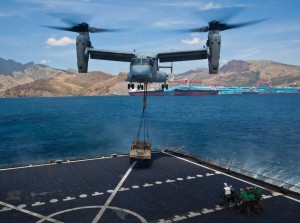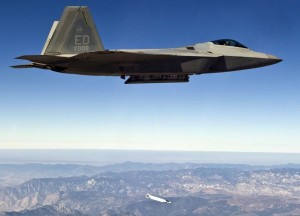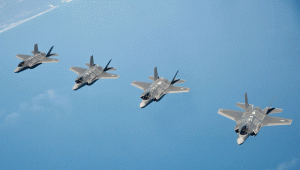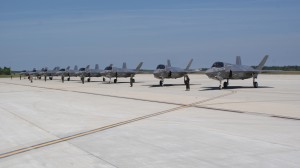2013-08-22 by Michael W. Wynne, 21st Secretary, USAF
Recently, Deputy Secretary Ashton Carter on the News Hour on PBS was very convincing that as the US military looks to the future, it must turn from the current engagements in the Middle East and look instead to the greater world threats.
He remained concerned about terrorist entities but felt they could definitely be a smaller part of our planning.
As he said clearly, we must look to the future as we make decisions that will affect the next twenty years of American security.
Sequestration is not going away; and thus all of this must be done during a period of austerity.
In the past we had a forceful leader who is often quoted, Sir Winston Churchill famously opined the ‘Now that we are out of money, we must think.’
This then is the challenge to the Department of Defense.
- Reset the tactical forces worn out from the extended engagement;
- Rebuild the Strategic and Maritime Force structure to deter and dissuade nation states wanting to impose their will on our freedoms;
- Rethink the application of the totality of our force structure and the softer side of our government to interoperate;
- And ‘see’ into the near future to develop plans and strategies, which accomplish the mission in the most peaceful way possible.
As President Reagan once said, ‘I never believed that having a strong military was a cause of war; but do believe it is a cause for peace’.
Thinking Differently
Given the present state of affairs; there is an acceptance that the immediate future will hold more budget reductions driven by sequestration. I note that the Defense Department has requested permission to re-arrange its accounts to minimize furlough days. This amounts to a realization that this is the future.
The Army has begun to identify a general troop force reduction. Though they have yet to identify specific units, they suddenly recognize that they compete with the US Marine Corps for quick strike.
The Navy has realized that the impact will be to fleet size; and have tentatively announced the imminent retirement of two additional Aircraft Carriers; and the pre-mature retirement of the vandalized 688 attack submarine that is nearing its point of no return relative to budget and life expectancy.
The Air Force has limited training, and must consider how to train while deployed. This has not been the plan over the decades of steady deployment. With aspects of Red Flag shut down; and the suspension of the fighter weapons school; the Air Force will need to position itself for a leap into the fifth generation tactics as they symbolically and for budget reasons fold their tent regards fourth generation air combat.

With only one gun kill in the storied history of the F-15 Aircraft, and the apparent standoff ranges that are driven by triple digit integrated air defense systems, re-thinking future warfare may be upon them.
The Marine Corps has uniquely been thinking this way as they stood firm to acquire both the V-22 Osprey; and the F-35B; developing and proofing tactics and techniques that drew a rebuke from the Naval Admirals; and praise from the Secretariat.
They have determined that to truly affect the ‘from the sea’ construct, that speed and range were going to be determinant variables.
They are still learning how to employ true fifth generation capability; but so far greatly understand the reinvention of ‘Air Assault’.
It is good to see the Air Force, and the support of the DoD in standing firm against the F-35 critics. Though the loss of the F-22 was serious; contemplating the loss of the F-35 capability in series would expose our nation to being second rate.
Admiral Mike Mullin in his earlier role as Chief of Naval operations talked in terms of a 1000 ship Navy; widely interpreted as engaging with allies more fully than before; introducing interoperability and joint defense mechanisms wherein a mixed allied fleet can operate as a unit. With the landing and refuel of the USMC Osprey of a Japanese warship, such concepts are being brought to life.
The same construct is even more distinctive with the continued ramp up of the F-35.
In the days where the PEO was sniping at his own program; the Pacific group of allies were angling to usurp early delivery slots and early training slots to bring their Air Forces into the 21st century. They watched as competitive air forces rolled out near replica versions of the F-22.
With the designed in ‘need to share’ incorporated into the F-35, targets can be pushed onto companion targeting screens bringing into modern operations the interoperable operations practiced between the F-16 and F-15 fighters before, but now available across many more air forces.
Though available technically, these are described tactics and procedures that will require practice and training to be truly instinctive in any future engagement.
Reshaping the Training Approach for New Con-Ops
But, even this aspect appears to be simply a replacement platform for the Fourth Generation. They are decidedly not, as the fifth generation embodies aspects of command and control only dreamed of by the great pilots.
The Air Force has a truly unique opportunity to re-boot the Weapons School curriculum into battle periods. It starts with the initial battle phase of deploying of the offensive-defense force. The multi-mission fifth generation force is not a sequencing of capability but a presence of an integrated strike, ISR and situational awareness and decision making force.
From the analysis of a Red offensive operation against a Blue defending force, one thing rings very clear, the age-old theory of mass matters.
This is the obvious thought that comes to mind as the USAF is not investing sufficiently in Air Combat platforms, and thus cannot stream enough of them into the battle to tip the scales.

Military historians would revel in this outcome that the cleverest of opponents fortified by great technologies falters and is defeated for running out of weapons. This outcome relies on the classic platform versus platform models, giving some credit for massing on their own, but one must consider and train for a Defensive Enterprise. This certainly would nullify analysis where there is no expectation of use of platforms or assets other than the involved air assets.
Constructing a defensive enterprise is a clarion call for greater integration, as this is the real outcome of the analysis, calling for additional innovation, given the apparent reduction in Air Combat quantities in the future, and supposing the continued expeditionary requirement for US forces.
Using concepts of the defensive enterprise, when targets might be passed to surface to air components while the airmen continue to conceal the source of the targeting; and integrate with Naval and Army weaponry to truly own the skies.
There is a real need to be convincing that as a platform alone no aircraft can bring enough weapons to the fight as effectively as sharing their acquired targets with others in the defensive enterprise.
Clearly, as the effect of future funding takes hold; doing more with less will involve building around the total enterprise.
The Second Battle Phase
The second battle phase of an operation entails neutralizing the air space. This will involve the Offensive Enterprise. In this second battle phase, the going in assumption of Integrated Air Defenses, plus sophisticated Air Defenders will complicate the mission.
As we reset the battlespace for Joint and Coalition Forces, we as well need to rethink the force application. Here the Air Force can return to its roots, and look to small unit tactics from the Army.
Under current thinking American planners called for increases the quantity of penetrators to meet global competitors; and for co-opting the Integrated Air Defenses. Given the current forecasts, this will not be achievable and so different strategies, and different tactics will be required to cause the Integrated Air Defenses to expose themselves in ways that allow the penetrators to shape the Battlespace, and as well allow a diversified set of shooters to open or breach the battlespace.
Rethinking, the concept of having your best sensors be the last to shoot will be a key to victory.
Such a concept will be a difficult one as it goes against many years of training to be a first strike asset. Such is the concept of Knowledge as an Asset in Warfare must be embedded in our construct of the Offensive Enterprise for penetration planning.
As this thought series is extended, there might be great utility for which Unmanned or remotely piloted systems might have an exceptionally useful role.
The carriage of weapons in fifth generation aircraft is both limited and limiting.
Pilots who are the first to launch expose themselves in a dramatic way; and one must presume that once exposed the probability of survival is greatly diminished. Again, one must see stealth as shelter from the enemy, prolonging the exfiltration of intelligence and reducing the probability of aggregate mission failure; not as a medium to enhance the probability of mission success for the individual fight.
Once we make the mental leap, now the Air Battle Manager construct can move into the cockpit where they can become the closed form kill chain and turn the available assortment of weapons to target time within the enemy’s cycle.
Given the “re-normed” knowledge-based battle management system shaped by the F-22 and F-35, we need to consider how to best use the legacy assets.

There will be long range missiles from the Navy; high speed fighters with long range radars, and in some cases coalition air defenses looking to participate from the ground based sights with all having the simple requirement of a validated target set.
For example, the commanders should consider bringing fourth generation to the forward edge of the battle to also act as throw weight in the advanced missile sphere. This would seem initially unnerving, but might be highly effective as an ‘over the shoulder’ launch; picked up and retargeted by the lead fifth generation aircraft.
Once the training takes hold these stealthy fighters will revel in the role as armed scouts; and fire control assets managing the entirety of the battlespace on behalf of the commander.
For positioning commanders can consider the use of legacy fighters in a defense mode as a protective curtain for the Tanker Operation and might even allow the Tanker to double as a router/ retransmission system for exfiltration of battlefield information. They will clearly be identified as soft targets very similarly as Navy oilers were identified in prior wars, then having to be protected by fast destroyers.
This leads to constructing a Enterprise wide required weapons management plan for any and all available shooters that can reach the battlespace that must be imposed as a target rich environment can easily exhaust and thus waste the see deep capability. The spread of assets across the sky as we can to effectively employ the weapons, both in terms of legacy and UAV will be a crucial aspect of the new generation of concepts of operations.
In time they should act in similar ways to ground commanders organizing the ingressing command, making sure that the Central Air Operations Center is distributing targets to other shooters, but protecting his area of operation; keeping his fire teams progressing to the objectives; while saving the best shooters for the end game mission; then as well organizing force withdrawal; hopefully with covering fire from other now ingressing force elements.
The Third Battle Phase
The third battle period or phase is the introduction of ground combat forces and the learned tactics from the current set of engagements.
Whether commencing as the Navy and Marines vision of from the Sea; or derived from the Air Sea Battle Vision scenario; or from the gathering storm of marshaling the Army into the Battlespace; this third period can be very prolonged; or can be foreshortened with calls for cessation or peace.
As we’ve seen from the introduction of Sniper pod and RPV sensors; ground commanders have become aware of and embraced the utility of spherical situation awareness, referred as well as the z – axis to enhance the perimeter defense taught for decades.
Interoperability is a turn of phrase captivated the department of defense for the first decade of the two thousand. It underpins the construct allowing data sharing across multiple platforms and command centers, to include the ground forces.
This can require excessive bandwidth; and complex engineering to properly present the incoming information to decision makers and maintain it in context with the displays that are being used on the various platforms and command centers.
It contains a Cyber twist; as it will require streams of intelligence as well as operational plans, and logistics to effectively manage the joint and coalition forces in motion.
With the Russian forces having introduced the Cyber domain as an adjunct to ground combat; full integration with theatre commanders will require joint exercises.
It seem to be time to unveil a fully integrated Joint Operations Requirement Document (JORD) where all activities in support of an action are documented for the Battlespace commander to gain a sense of what when and how around GPS coordinates.
Although simple in concept, it is imperative in a rapid fire engagement; where target development, verification, and validation will be a multiplayer game.
This will be about data taxonomy, and security through data integrity.
The phrase every shooter a sensor; and some sensors a shooter accurately frames the notion of leverage in the interoperable third phase of the battle space. Because of the evolving nature of modern warfare; the need to share trumps the need to know; and concepts of horizontal command occur, where low level commanders can task high-powered assets to relieve enemy pressure around their position.
This leaves battle and theater commanders with ensuring that the proper weaponry is expended; and reserve weaponry is available to confront unknowns which occur with frightening speed.
The Impact of the F-35
With the fielding of the F-35, we can take full advantage of the ability to interchange information.
This because the aircraft capability will allow the pilot to be a node on the net with an internal router able to receive and transmit information to Air Operation Centers, Air Operation Commanders and Combatant Commanders.
For years, the Airforce and ground force commanders have engaged in Green Flag exercises where both learn the requirements for close air support in this changed battlespace for the three dimensional warrior. This needs to be carried forward as a part of the training syllabus, including conflict resolution in the close and deep fight. Now this can be truly enhanced.

The reset of our forces considers not just the restoration of combat capability but looking forward to a very different battle space.
Training for the reset might require returning to a prior age where primary missions for defense, and primary mission for offense were separate elements in the syllabus.
The rebuilding of our forces considers what occurs in boot camp; tearing down concepts of operation; and training for different concepts such that we leverage not just our unit’s forces; but those of our joint and coalition partners.
This might require building to a portfolio of capabilities; as well as enhancing the Defensive and Offensive enterprises.
Rethinking is the hardest; and will require straightforward training, as the employment of forces to optimize kills and one weapon for one kill is not the way American forces currently engage.
For years we have trained to expend ordnance. In the Navy it is an absolute requirement.
But as we introduce the F-35B the threat of an accident is greatly diminished; and weaponry might be better husbanded. First strike will also need to be rethought; as the Army has long discovered in both the Infantry and Artillery, scouts for large unit targets; and Fire placement trumped small unit engagement. Concealment as well trumped exposure.
Developing the training syllabus has never been more complex, but as our capable Pilots and Commanders have re-learned, operating jointly saves lives.
In the future, with diminished apparent force; this will be the key to victory.

